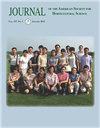石竹叶片转录组和代谢组综合分析揭示黄酮类化合物合成途径关键基因
IF 1.1
4区 农林科学
Q3 HORTICULTURE
Journal of the American Society for Horticultural Science
Pub Date : 2021-03-02
DOI:10.21273/JASHS05020-20
引用次数: 2
摘要
石竹(Lithocarpus polystachyus)是一种独特的药用树种,其叶片中含有丰富的黄酮类化合物。目前,类黄酮生物合成途径中涉及的基因和代谢物仍然知之甚少。为了阐明黄酮类化合物的生物合成途径,对幼叶、成熟叶和老叶进行了转录组和代谢组分析。共获得86,927个unigenes,其中51.4%在8个公共数据库中被注释。44个类黄酮生物合成途径候选基因中,大部分随着叶片老化而下调。代谢组分析显示叶片中有427种代谢物。与转录组学结果一致,黄酮类化合物通路19种代谢物中有15种在叶片发育过程中减少。结果表明,初叶是茶叶采收的最佳时期。这是首次报道了L. polystachyus的综合转录组和代谢组分析。本研究揭示了黄酮类化合物生物合成相关基因表达与代谢产物的相关性,揭示了黄酮类化合物在幼叶中积累的关键基因。该研究结果可为进一步阐明和调控水杨花黄酮类化合物的生物合成提供参考。本文章由计算机程序翻译,如有差异,请以英文原文为准。
Comprehensive Transcriptome and Metabolome Analysis of Lithocarpus polystachyus Leaf Revealed Key Genes in Flavonoid Biosynthesis Pathways
Lithocarpus polystachyus is a unique medicinal tree species that is valued for its abundant flavonoids in leaves. Currently, genes and metabolites involved in the flavonoid biosynthesis pathway remain largely unknown. To elucidate the flavonoid biosynthesis pathways, transcriptome and metabolome analyses of young, mature, and old leaves were conducted. A total of 86,927 unigenes were obtained, and 51.4% of them were annotated in eight public databases. The majority of the 44 candidate genes in the flavonoid biosynthesis pathway were downregulated as leaves aged. Metabolome profiling revealed a set of 427 metabolites in leaves. Consistent with the transcriptome results, 15 of the 19 metabolites in the flavonoid pathway decreased during the development of leaves. The data indicate that young leaf is the optimal stage for tea harvest. This is the first report of integrated transcriptome and metabolome profiling of L. polystachyus. This study demonstrates the correlation of gene expression and metabolites related to flavonoid biosynthesis and reveals the key genes responsible for flavonoid accumulation in young leaf. The information can be applied to future studies performed to elucidate and manipulate flavonoid biosynthesis in L. polystachyus.
求助全文
通过发布文献求助,成功后即可免费获取论文全文。
去求助
来源期刊
CiteScore
3.80
自引率
0.00%
发文量
31
审稿时长
2 months
期刊介绍:
The Journal of the American Society for Horticultural Science publishes papers on the results of original research on horticultural plants and their products or directly related research areas. Its prime function is to communicate mission-oriented, fundamental research to other researchers.
The journal includes detailed reports of original research results on various aspects of horticultural science and directly related subjects such as:
- Biotechnology
- Developmental Physiology
- Environmental Stress Physiology
- Genetics and Breeding
- Photosynthesis, Sources-Sink Physiology
- Postharvest Biology
- Seed Physiology
- Postharvest Biology
- Seed Physiology
- Soil-Plant-Water Relationships
- Statistics

 求助内容:
求助内容: 应助结果提醒方式:
应助结果提醒方式:


